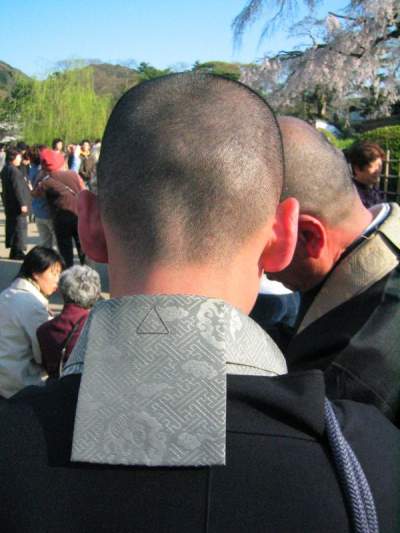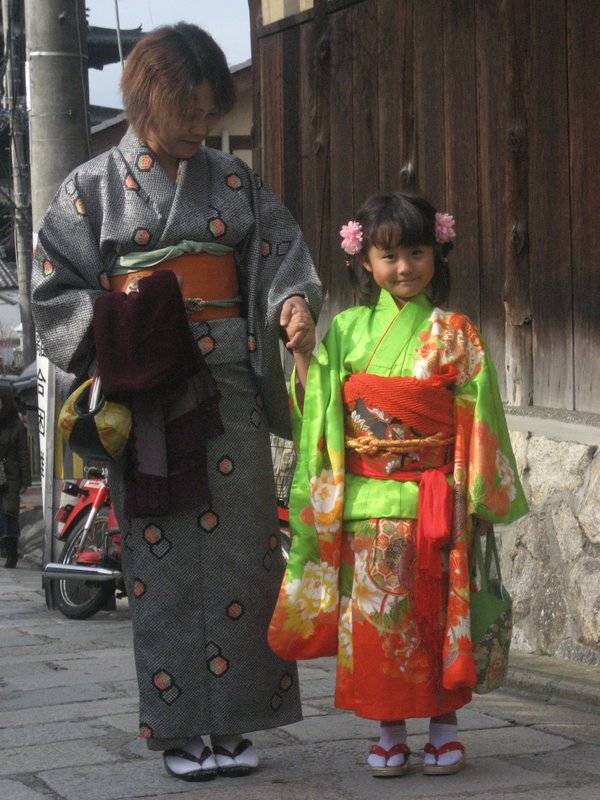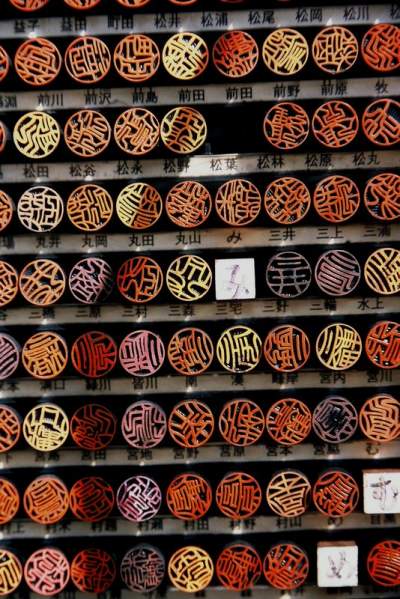Modern Japanese life, society and culture

Most foreign tourists or visitors to Japan have read about and heard about Japanese culture all their lives. But Japan is a complex destination, a blend of ancient, old, new, and extremely new.
Over the last 30 years, as a guide and a Japan tour operator, I have learned that foreign tourists and visitors to Japan seem to be the most interested in speaking about contemporary Japanese life and how much of traditional life remains alive and how . . .
From 1999 to 2009 I was a part-time professor at one of Japan’s largest private universities (Ritsumeikan University) and every term I had roughly 300-400 new first year students. Because I am curious, I interviewed all my new classes during the first week and asked them questions about their life before coming to university. Did they still sleep on futons? Did they still eat a traditional Japanese breakfast? How much of their diet was traditional Japanese food versus Western Japanese food? Did they wear any traditional form of Japanese clothing?
Their answers to these questions were revealing. And an overwhelming number of students reported that their lives weren’t very Japanese at all any more. They grew up in apartments and modern houses. They slept on beds. They had coffee and toast for breakfast. They ate a lot of pasta and less and less rice. They didn’t wear any clothing that was Japanese. And, in general, they didn’t know much at all about the old ways of Japan in any way.
The only exceptions to this trend were the students that grew up in countryside towns far from the big cities. These students still slept on futons, ate traditional breakfasts and also knew a fair bit about “old Japan”.
The section below “shows” how Japan has changed in the last 20 years. Daily Japanese life in cities has and hasn’t’ changed all that much. The countryside, however, is where the unique sides of Japan are much easier to see and these sides are amazing. Old people in the rice fields. Young people in near-abandoned villages and coastal areas. And in the countryside there is an incredible range of wooden structures (earthen walls and wood and tile), ancient worked stone surfaces, nature just beyond where you are sleeping and extraordinary people over all. And Kyoto in particular offers a unique range of ancient assets and the countryside and mossy stone riverbanks and farms and silence are just beyond every horizon, an hour away or less! Learn more!
Content by Ian Martin Ropke, owner of Your Japan Private Tours (est. 1990). I have been planning, designing, and making custom Japan private tours on all five Japanese islands since the early 1990s. I work closely with Japan private tour clients and have worked for all kinds of families, companies, and individuals since 1990. Clients find me mostly via organic search, and I advertise my custom Japan private tours & travel services on www.japan-guide.com, which has the best all-Japan English content & maps in Japan! If you are going to Japan and you understand the advantages of private travel, consider my services for your next trip. And thank you for reading my content. I, Ian Martin Ropke (unique on Google Search), am also a serious nonfiction and fiction writer, a startup founder (NexussPlus.com), and a spiritual wood sculptor. Learn more!
Major historical and social trends from 1990-2020

The Japanese economy roared to the top of world in the late 70s and early 1980s. It was a mini-moment of Japanese empire with lots of trophy purchases in NYC, California and in the art world. At the peak you could spend $500 for a cup of coffee in the Ginza district of Tokyo because you were 1.5 meters away from a real impressionist painting. The area of the cover of Time magazine was worth $10,000 in central Tokyo real estate at the peak.
But the bubble burst less than 10 years later and Japanese real estate and a lot more fell down, down and down. Real estate prices continued to fall for another 20 years! But the core of Japanese industry and manufacturing remained powerful and it still is. There are parts that can only be made in Japan including the NASA Space Shuttle and many other applications. Japan also was an early leader in robotics.
Japan is still overwhelmingly a group culture and though the nation is super rich (#2 or #3 global since the 1980s) the Japanese people are not. But there really isn’t any poverty and crime has never been an issue. The poorest people, in a way, are the huge elderly population, many of whom receive really low pensions from the government. And many elderly continue to work to make ends meet.
Japan, believe it or not, did not seem to see China as a threat until it was way too late. In fact, most Japanese continued to believe the widespread Japanese Chinese propaganda of the 60s, 70s and 80s. To the Japanese China would always be a country of peasant farmers. A great country a thousand years ago but nothing more than a peasant economy since Mao took over in the 30s and 40s . . . How wrong they were!
Chinese people and Japanese people are completely different. The biggest difference is individuality. The Chinese, in this respect, are quite similar to Americans (and many say a software engineer in California thinks pretty much like one in Shanghai; Japan, on the other hand, is not really known for its software but hardware in every way).
The Japanese have been social engineered for centuries to be a group people or a herd and individuality was punishable. In fact, samurai had license to kill and they killed many bold farmers and peasants who tried to do different. The worst fate of a Japanese is being ostracized by society and even family. And Japan is one of the only cultures in the world where the family will side with society against the “personal” interests of their children.
Free opinion and express of opinions related to economics, politics, tea ceremony or haute cuisine is frowned upon to the extreme. For example, Japanese newspaper readers, ie most people, do not discuss what they have read. You can only discuss what you have read if you are an expert in that field. Meaning if you have a Phd in that area of the news. If you don’t it is considered arrogant and risky to talk about what you have read.

On trains and subways across the commuting Japanese city worlds you will see many people reading. Probably more than any other industrialized country on the planet. But every book is wrapped in the paper of the store that sold the book. So you don’t know what they are reading and thus you can’t start a conversation because you have no idea.
In a way, the only area of Japanese individuality that is alive and well is their sexuality. And this is a completely private realm. Parents do not ask their teenagers about this. It’s private. On the other hand, “joking” and “gossiping” about other’s sexual natures and the like, is completely OK and common at drinking parties and elsewhere in social gatherings.
Japanese people either say very little or nothing at all. They are very reserved about most matters that are daily conversation opportunities in other countries. Japanese group conversations and between individuals tend to be superficial, light and almost childish. And this can be very refreshing when you are used to the head driven conversations of Germany or the USA. Superficial and light is less stressful and definitely less confrontational. I like both but really do appreciate the Japanese way because it is light (I do enough heavy thinking in my private life already! -😊).
And Japan’s English problem is well reported on in the media. There has been some change. Young people are much more confident interacting with foreigners and many do speak English well enough. Most Japan also read English much better than they speak it. So when in doubt, write it down! The biggest challenge for the Japanese is learning to be comfortable making mistakes when communicating in a foreign language. But shame and fear of mistakes are still a huge obstacle, especially when you get off the beaten track.
Japan is also a country of old people. The oldest and biggest ageing population in the world. And the Japanese birthrate has been the lowest in the industrialized world since the 1980s. This creates dynamics of opposites. When you visit a temple, a normal temple that tourists don’t visit, you will see mostly elderly people because Buddhism is about death and the next world.
And let’s not forget Western propaganda regarding Japan. Until only recently, Westerns thought of Japan as country of packed trains, a country of workers that were worked to death and a country where everything was outrageously expensive. All not true but all convenient for “forcing” Japan to invest huge sums in their domestic infrastructure and pay for significant percentages of the Iraq wars and more . . .
The cost of living in Japan hasn’t really changed since the early 1980s. Food is more expensive than in the USA but comparable to Europe and many other industrialized countries.
So most potential foreign visitors to Japan have their own propaganda memes that were conveniently created by the Western media and which were also convenient for Japanese power brokers. Japan is expensive. Japanese people are “weird” or “funny” or “strangely different” making leisure travel complicated and business travel odd indeed. Suicide is OK. Death by overwork happens. All true and not true. But the media made it seem real and the themes are still the same ones they were 30 years ago.
But there are also enormous changes and forces that have actually created a new Japan. Not on the surface. Not in every Japanese. But big changes all the same.
Today in Japan it is quite common to be served in a convenience store or a restaurant by a Japanese speaking foreigner. Filipinos. Thais. Iranians. People from China. Many. In manufacturing jobs they feature prominently in the dirty, dangerous, hard on the body and mind (kitanai, kiken, kitsui). This is a huge change for Japan as the birth rate is so low and because the elderly make up a huge percentage of society . . .
The lives of women have also changed massively in the last 20 years. They are assertive, independent and vivacious compared to their male counterparts. They travel a lot and they are vibrant and usually pretty good at English as well. Interesting!
Suicide is different in Japan and since about 2007 group suicide has also become “popular”. Japan is a shame culture as opposed to a guilt culture. Shame can and does lead to suicide. And sometimes you can read about a 10 year old boy who made a mistake in a baseball game and . . . Japan, however, is about 30th for suicide rate. Comparable to Estonia, Sweden and the USA. So here the change is big because Japan was once #1 for a long time for this permanent solution to a temporary problem. Today, South Korea has a much bigger problem as do Russia and India . . . To learn more about suicide and Japan see The Sea of Trees (2015) with Matthew McConaughey and Naomi Watts and Ken Watanabe. Excellent!
The Japanese and the Germans are very alike when it comes to work. They work very hard indeed. However, in Japan sacrifice is much more prevalent. Sacrifice for the good of the company. Overtime without pay. Usually commutes of 90 minutes one way. And few holidays taken even though the laws say otherwise . . . The fastest walkers in the world are the busy in Tokyo. It’s a fast paced and pretty noisy world in the big cities but that is only one face of Japan . . . The extremes seem to dominate the headlines.
Japan has also suffered enormous setbacks from typhoons, tidal waves, earthquakes and the Fukushima nuclear “meltdown”. But they learned from Fukushima and have left nuclear power mostly off since 2011. And that is a good thing. Fukushima is now pretty much thriving again and it’s a beautiful area.
The final area to consider is Japan’s considerable range of talents, interest in and fame for its contemporary culture. Manga. Anime. Studio Ghibli. Horror films that capture international audiences. Contemporary art, design and creativity that ranks with Italy, France and the UK (all very important cultures for the Japanese).
Japan also invented cellphone to cellphone texting, modern video gaming themes, and many other significant inventions. Japan files for the second most patents in the world after the USA. Japan is a leader in robotics, electronics, and precision manufacturing that is unrivalled even today anywhere. Some argue that Japan’s precision manufacturing is the outcome of its equally demanding and precise craft industries like lacquer, textiles, bamboo work, cabinet making and on and on. I believe it!
Last, but not least, Japan has changed in the world of international tourism. Outbound Japanese are still in the top 5 for spending on travel abroad. But inbound foreign travel to Japan has exploded in the last 5 years from about 10 million visitors a year to a high of 31.9 million in 2019. Why? Because the Japanese offered easy 90-day visas to nearly all countries in Southeast Asia. And if you look at the statistics you can see that tourism in Japan has changed a lot. Chinese from the mainland account for about 30 percent of all foreign visitors. Koreans about 20 percent. Taiwan 15 percent. Southeast Asia about 10 percent. Hong Kong 7 percent. And the USA about 4 percent. And Europe about 4 percent.
The inbound Japan travel statistics above show that Europeans, Americans and Canadians are just “discovering” the attractions and wonders of Japan. And that Asians are the overwhelming drivers of foreign tourism in Japan. And for good reasons: 1. Nearby and easy to get to. 2. Japan’s climate and natural forest and nature assets are unique for Asians. In July, Singapore is a humid oven but the Japanese Alps and Hokkaido are cool and forested in July and August.
Japan, despite all the change or lack of change, is a travel destination that offers international travelers almost everything. Japan is the perfect planet for ancient and modern all mixed into one. Few countries can claim to have ancient buildings and gardens, living traditional craft traditions, exceptional modern shopping opportunities, nature, and some of the most popular contemporary culture offerings in the world. Japan is unique and in France there is even a book called “Planet Japan”. See for yourself! Learn more!
Return to the Japanese culture essay index.
Content by Ian Martin Ropke, owner of Your Japan Private Tours (est. 1990). I have been planning, designing, and making custom Japan private tours on all five Japanese islands since the early 1990s. I work closely with Japan private tour clients and have worked for all kinds of families, companies, and individuals since 1990. Clients find me mostly via organic search, and I advertise my custom Japan private tours & travel services on www.japan-guide.com, which has the best all-Japan English content & maps in Japan! If you are going to Japan and you understand the advantages of private travel, consider my services for your next trip. And thank you for reading my content. I, Ian Martin Ropke (unique on Google Search), am also a serious nonfiction and fiction writer, a startup founder (NexussPlus.com), and a spiritual wood sculptor. Learn more!